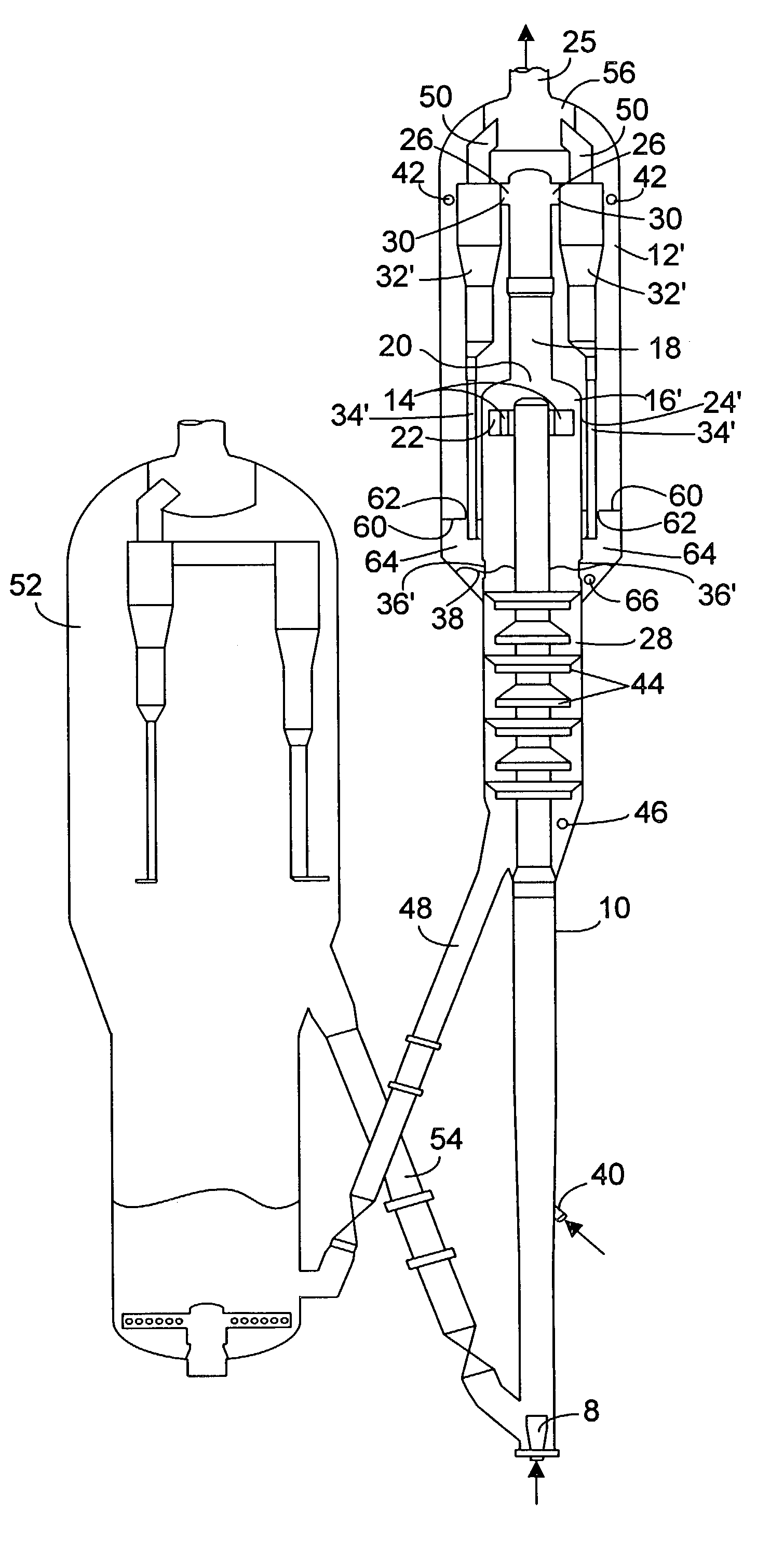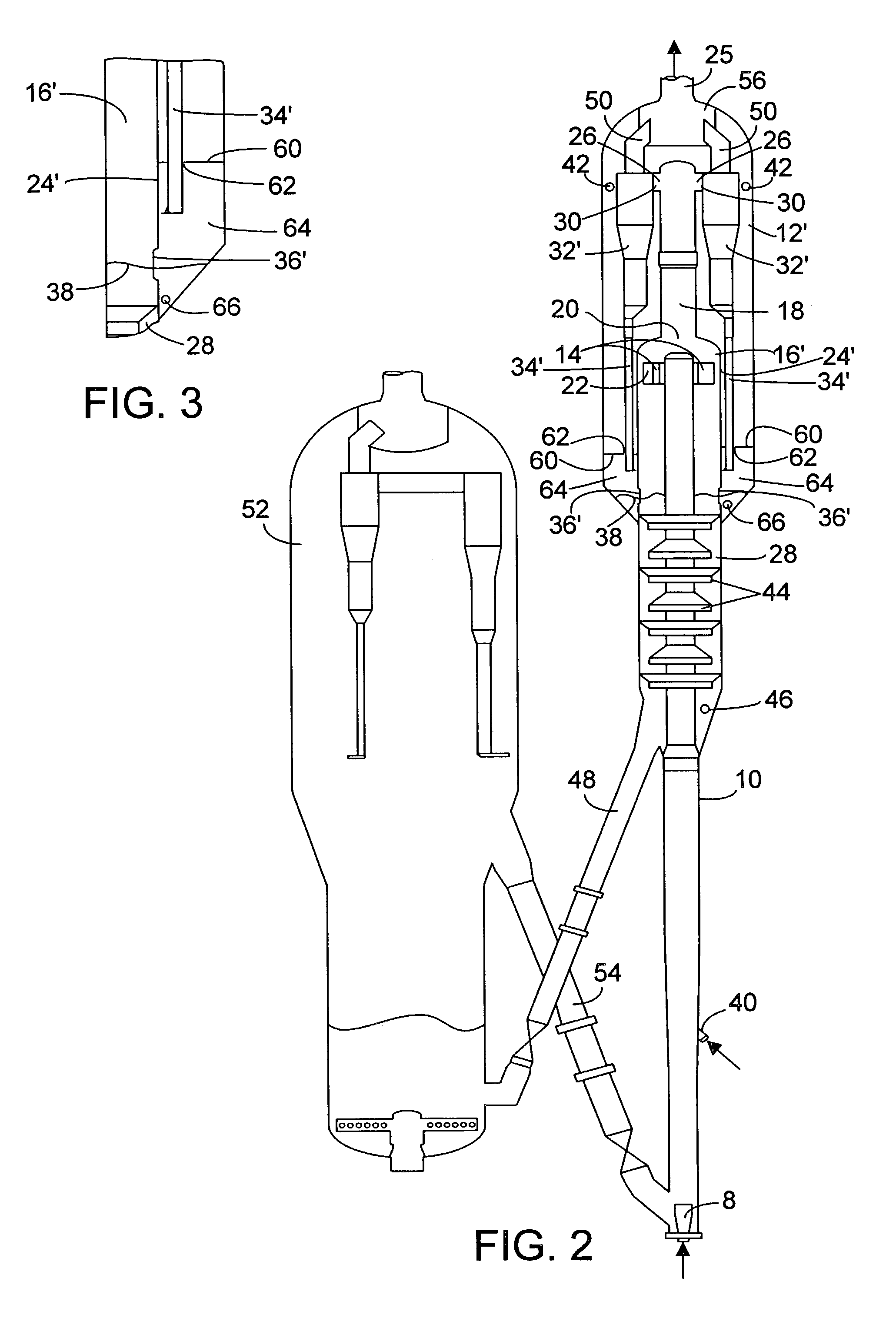Apparatus and process for minimizing catalyst residence time in a reactor vessel
- Summary
- Abstract
- Description
- Claims
- Application Information
AI Technical Summary
Benefits of technology
Problems solved by technology
Method used
Image
Examples
Embodiment Construction
[0019]The present invention can be used in any apparatus or process in which solids and gases must be separated. However, an FCC process always requires such separations and will be the most widespread application for the present invention. Hence, the present invention will be exemplarily described in an FCC application.
[0020]Looking first at more details of an FCC process in which the present invention may be used, the typical feed to an FCC unit is a gas oil such as a light or vacuum gas oil. Other petroleum-derived feed streams to an FCC unit may comprise a diesel boiling range mixture of hydrocarbons or heavier hydrocarbons such as reduced crude oils. In an embodiment, the feed stream may consist of a mixture of hydrocarbons having initial boiling points, as determined by the appropriate ASTM test method, above about 230° C. (446° F.), often above about 290° C. (554° F.) and typically above about 315° C. (600° F.) and end points no more than about 566° C. (1050° F.). The reactio...
PUM
| Property | Measurement | Unit |
|---|---|---|
| Volume | aaaaa | aaaaa |
Abstract
Description
Claims
Application Information
 Login to View More
Login to View More - R&D
- Intellectual Property
- Life Sciences
- Materials
- Tech Scout
- Unparalleled Data Quality
- Higher Quality Content
- 60% Fewer Hallucinations
Browse by: Latest US Patents, China's latest patents, Technical Efficacy Thesaurus, Application Domain, Technology Topic, Popular Technical Reports.
© 2025 PatSnap. All rights reserved.Legal|Privacy policy|Modern Slavery Act Transparency Statement|Sitemap|About US| Contact US: help@patsnap.com



